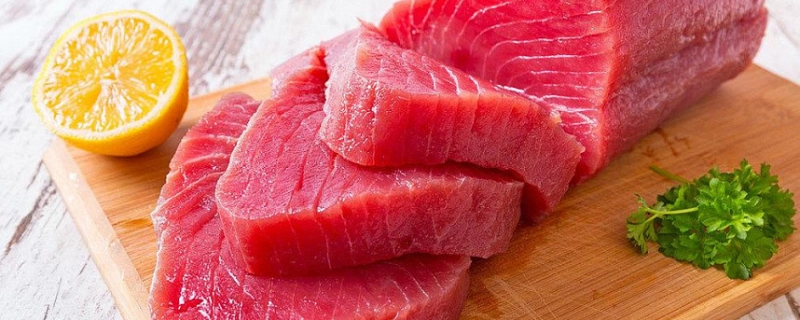Tuna: Taste Profile, Aroma, Benefits and Health Risks
Tuna is among the most consumed fish globally, praised for its versatility, robust flavor, and significant nutritional benefits. Popular in cuisines worldwide, from Japanese sashimi and sushi to Mediterranean grilled steaks and salads, tuna's culinary presence ranges from everyday convenience foods to luxurious dining experiences. Its firm texture, rich taste, and nutritional density underscore its esteemed place on global tables.
Tuna is seafood and unsuitable for vegetarians, vegans, and individuals allergic to fish. Tuna is naturally gluten-free, though processed or canned varieties may include gluten-containing additives. Due to mercury concerns, tuna consumption should be moderate, especially for pregnant women and young children.
What does Tuna taste like?

Complete Sensory Description
Taste
Tuna has a notably robust, rich, savory flavor characterized by deep umami notes and a subtle mineral freshness. Unlike many mild white fish, tuna presents a distinctively meat-like flavor profile, exhibiting subtle iron-like metallic undertones alongside gentle sweetness. Its natural savoriness intensifies notably when grilled or seared, further enhancing its appeal to seafood lovers who prefer bold, substantial flavors.
Aroma
Fresh tuna boasts a subtle, clean, mildly marine fragrance, hinting at freshness without overt fishiness. Cooking, particularly grilling or searing, deepens the aroma, producing appetizing, roasted notes with subtle caramelization and enticing savory nuances reminiscent of grilled meats rather than typical fish.
Texture
Tuna’s flesh is notably dense, firm, and muscular, creating a steak-like texture. Ideal for grilling or pan-searing, its meaty consistency delivers a satisfyingly robust bite. In sushi and sashimi preparations, raw tuna’s silky, smooth texture provides a luxurious mouthfeel.
Appearance
Fresh tuna presents deep red to dark-pink flesh, firm and dense, resembling red meat rather than typical fish. Upon cooking, tuna turns pale beige or pinkish-brown externally while often remaining pink to red internally when served rare or medium-rare, providing visual allure and gourmet appeal.
In-depth Flavor Analysis
The taste of tuna is deeply influenced by its unique biochemical composition, habitat, diet, and species. Tuna's robust, "meaty" taste originates primarily from its elevated levels of myoglobin, the protein responsible for its rich red color, similar to red meat. Myoglobin contributes distinctly savory, umami-rich characteristics, reinforced by naturally occurring free glutamic acid, enhancing its full-bodied, mouthwatering depth.
Amino acids such as glycine and alanine subtly sweeten tuna’s flavor, complementing the savory notes. High-quality fats, particularly omega-3 fatty acids (EPA and DHA), impart mild buttery notes and enhance flavor complexity. Fat content differs significantly by species: fatty varieties like Bluefin possess richer taste, buttery texture, and deeper umami intensity, whereas leaner species like Yellowfin or Skipjack offer lighter flavors.
Cooking greatly impacts tuna’s taste: raw tuna emphasizes subtle sweetness and fresh marine undertones; brief searing develops complex caramelization through Maillard reactions, accentuating savory intensity, sweetness, and gentle nuttiness, creating a harmonious, layered flavor experience.
Varieties and Culinary Applications
Bluefin Tuna
- Highly prized for sashimi and sushi, valued for deep-red flesh, luxurious texture, and exceptional richness.
- Ideally served raw, lightly seared, or grilled rare to preserve optimal taste and texture.
Yellowfin Tuna
- Slightly milder taste; popular for grilling, searing, and sushi preparations.
- Perfect for steaks, salads, or poke bowls.
Skipjack Tuna
- Most commonly canned; affordable, mild-flavored variety popular in sandwiches, salads, and pasta dishes.
- Ideal for everyday convenience recipes.
Albacore Tuna (White Tuna)
- Mild, delicate flavor and softer texture, popularly canned or grilled; widely enjoyed in sandwiches and salads.
Selection and Storage
Selecting Quality Tuna
- Fresh tuna should appear firm, vibrant deep-red or pink, with clean smell, moist surface, and no brownish discoloration.
- Avoid tuna with dull coloring, dryness, or strong ammonia-like odors.
Storage Recommendations
- Refrigerate fresh tuna promptly below 4°C (39°F), consuming ideally within 1–2 days.
- Freeze tuna tightly wrapped, maintaining freshness for up to 3 months, thawing slowly in refrigeration before preparation.

Nutritional Insights
-
Protein-Rich:
Exceptional source of high-quality protein, essential amino acids for muscle development, tissue repair, and overall health. -
Omega-3 Fatty Acids:
Rich source of EPA and DHA, crucial for cardiovascular health, brain function, and inflammation reduction. -
Vitamins and Minerals:
Contains significant vitamin D, vitamin B12, selenium, iodine, magnesium, phosphorus, and potassium—nutrients supporting metabolic function, immune health, and bone density. -
Low in Calories and Carbohydrates:
Tuna provides nutrient-rich, low-calorie protein, ideal for balanced diets, weight-conscious eating plans, and overall healthy nutrition.
Expert Insights & Culinary Tips
-
Optimal Preparation:
Experts recommend brief cooking methods (searing, grilling) to retain tenderness, moisture, and flavor complexity; avoid overcooking to prevent dryness. -
Flavor Pairings:
Tuna pairs exceptionally well with soy sauce, ginger, wasabi, citrus (lime, lemon), avocado, sesame seeds, olive oil, garlic, fresh herbs (cilantro, basil), and light marinades enhancing complexity without overpowering. -
Serving Suggestions:
Allow cooked tuna to rest briefly after preparation, preserving moisture, tenderness, and enhancing natural flavors.
Interesting and Curious Facts
- Tuna plays a vital culinary role worldwide, notably as the most popular fish choice for sushi and sashimi, especially prized bluefin tuna known for exceptional quality and luxurious texture.
- "Toro" (fatty tuna belly) remains one of the highest-valued sushi ingredients globally, revered for its buttery texture and delicate taste.
- Tuna became a staple ingredient in convenience meals and home-cooking worldwide primarily through canned forms, revolutionizing seafood accessibility.
Harm and Dietary Considerations
-
Mercury Content:
Certain tuna varieties (particularly large species such as bluefin and bigeye tuna) contain elevated mercury levels; pregnant women, nursing mothers, and young children should limit intake of these types. -
Allergy Risks:
Individuals allergic to seafood or fish proteins must avoid tuna entirely to prevent allergic reactions. -
Histamine (Scombroid Poisoning):
Improper storage may result in high histamine levels causing allergic-like reactions; always handle and store tuna safely, refrigerating promptly.
Religious and Cultural Consumption
General Considerations:
Tuna is broadly permissible across most religions.
- Islam: Tuna is halal and widely consumed in Muslim communities worldwide.
- Judaism: Tuna is kosher, suitable for consumption according to Jewish dietary law.
- Hinduism: Generally permitted, as fish consumption does not violate common Hindu dietary practices.
- Christianity and other religions: Tuna is widely consumed without restriction, making it universally acceptable in diverse cultural and religious contexts.
Final Thoughts & Sensory Journey
Tuna remains a celebrated seafood choice, cherished globally for its bold, savory flavor, luxurious texture, and exceptional culinary versatility. From delicately sliced sashimi to hearty grilled steaks, tuna’s rich taste, nutritional excellence, and broad culinary appeal ensure enduring global popularity, providing deliciously memorable gastronomic experiences.
Resources
- McGee, H. (2004). On Food and Cooking: The Science and Lore of the Kitchen. Scribner.
- USDA FoodData Central (2023). Tuna: Nutritional Profile, Handling, and Cooking Guidelines.
- Food and Agriculture Organization (FAO). (2021). Global Seafood: Culinary Traditions, Nutritional Insights, and Safety Guidelines.











